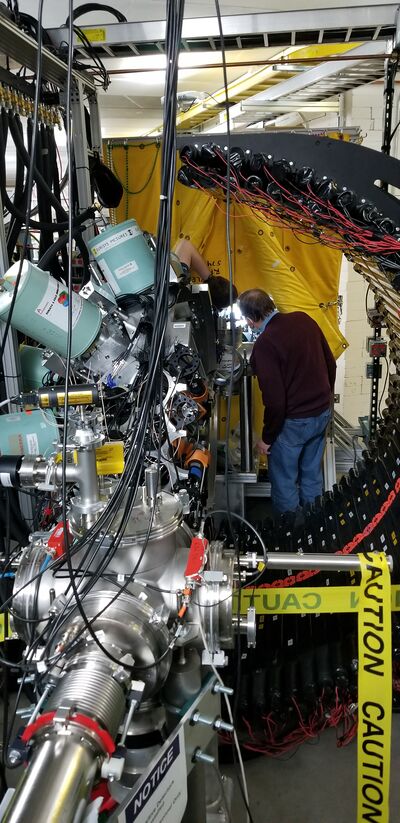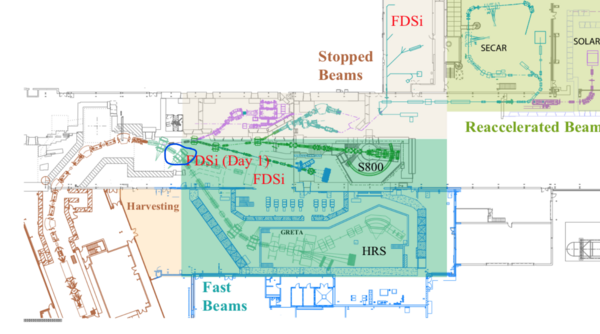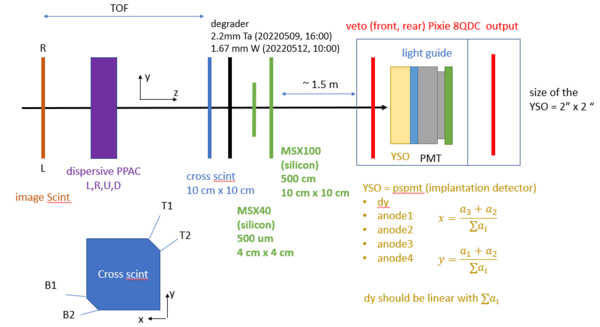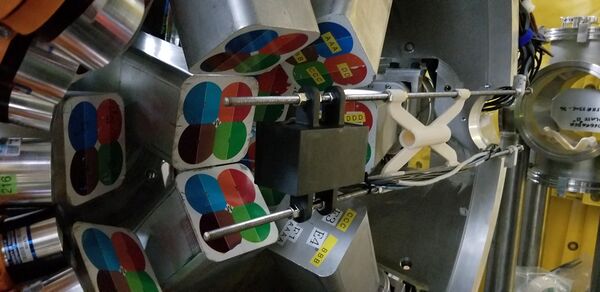FRIB FDSi e21062: Difference between revisions
(→Elog) |
|||
| Line 26: | Line 26: | ||
Quote from the proposal: | Quote from the proposal: | ||
''The goal of the proposed investigation is to perform multi-modal decay spectroscopy in the region near N=28 and below the <sup>20</sup>Ca nuclei. Specifically, decay of the N=29 isotones into their N=28 daughters and the N=28 isotones into their N=27 daughters from Mg to Ar are targeted, with specific cases highlighted in the introduction. Additionally, decay of the near-dripline systems of | ''The goal of the proposed investigation is to perform multi-modal decay spectroscopy in the region near N=28 and below the <sup>20</sup>Ca nuclei. Specifically, decay of the N=29 isotones into their N=28 daughters and the N=28 isotones into their N=27 daughters from Mg to Ar are targeted, with specific cases highlighted in the introduction. Additionally, decay of the near-dripline systems of <sup>40</sup>Mg and <sup>37</sup>Na will be studied.'' | ||
== Beam == | == Beam == | ||
Latest revision as of 23:57, 24 May 2022
FRIB FDSi (FRIB Decay Station initiaor) e21062 experiment is the first experiment using the fast beam line since the official opening of FRIB on May 2, 2022. The FDSi consists of 4 detectors devices for neutron detection (VANDLE), gamma-ray detection (Clarion1), total absorption (MTAS), and an implantation detector (YSO).
The experiment has collaboration of 50+ people from 9 institutes,
- Florida State University
- Argonne National Laboratory
- Brookhaven National Laboratory
- Facility for Rare Isotope Beams (FRIB)
- Lawrence Berkeley National Laboratory
- Lawrence Livermore National Laboratory
- Mississippi State University
- Michigan State University
- Oak Ridge National Laboratory
- University of Tennessee
For more information on the FDSi
- https://fds.ornl.gov/
- https://fds.ornl.gov/initiator/
- https://indico.frib.msu.edu/event/20/attachments/106/586/FDSi-FRIB1-Workshop-slim.pdf
- https://indico.frib.msu.edu/event/20/attachments/106/585/FDSi_intro_2020d.pdf
Experimental Objective
Quote from the proposal:
The goal of the proposed investigation is to perform multi-modal decay spectroscopy in the region near N=28 and below the 20Ca nuclei. Specifically, decay of the N=29 isotones into their N=28 daughters and the N=28 isotones into their N=27 daughters from Mg to Ar are targeted, with specific cases highlighted in the introduction. Additionally, decay of the near-dripline systems of 40Mg and 37Na will be studied.
Beam
48Ca beam with 117 MeV/u {need to be confirmed} hits on natural carbon target to produce the fragmentation beam.
Experimental Setup
Elog
FSU hosts a copy of the internal elog.



